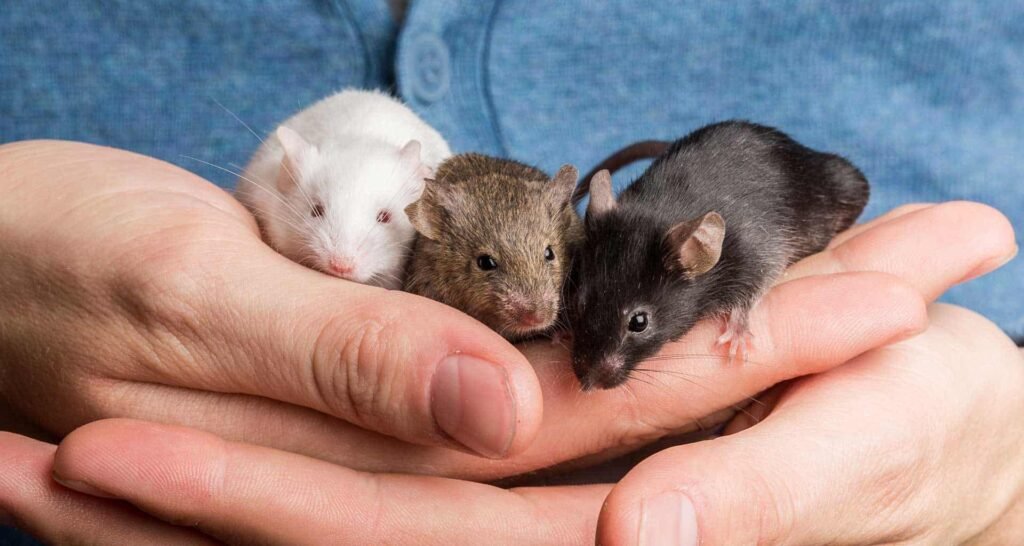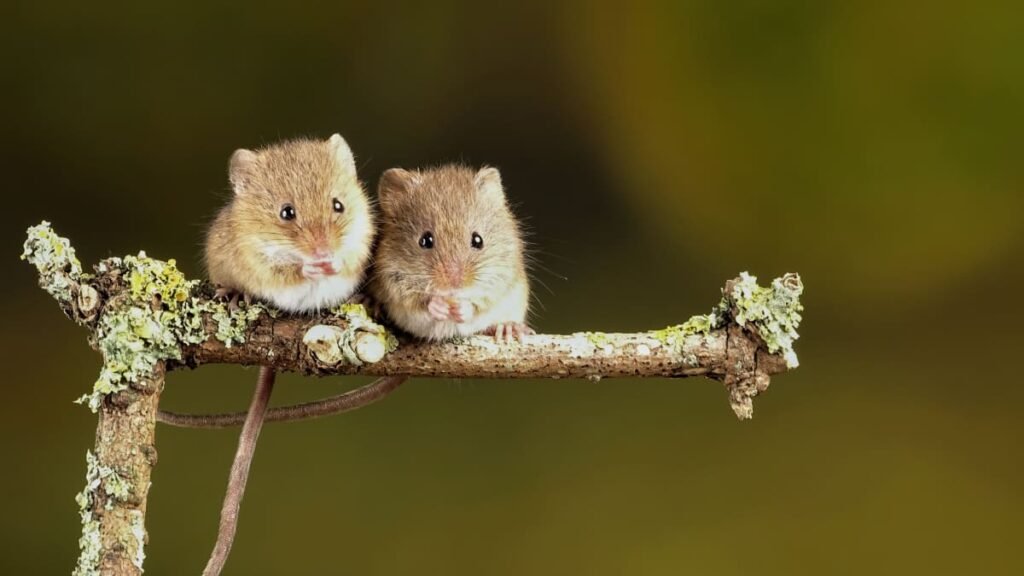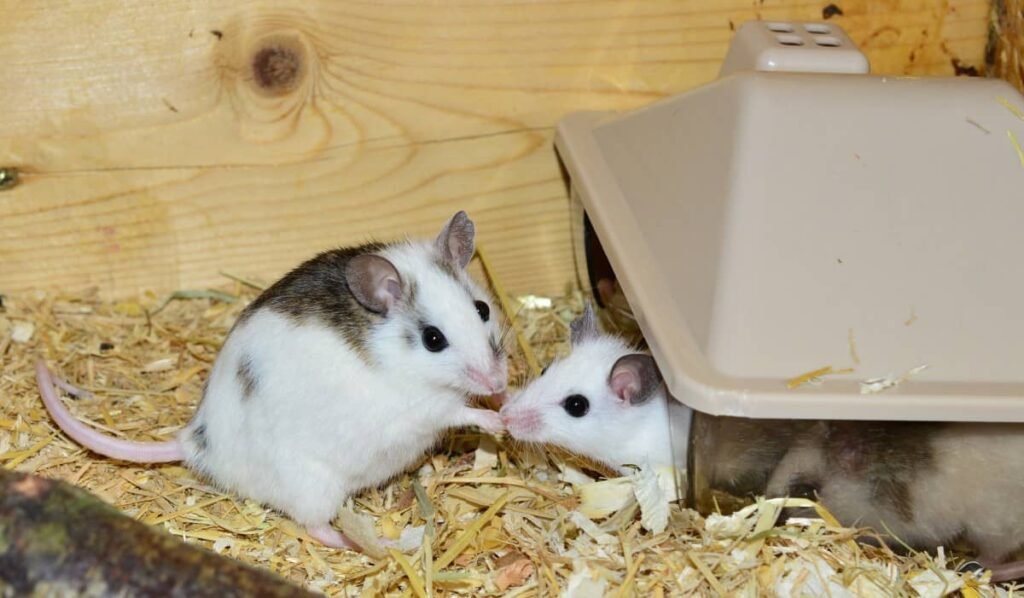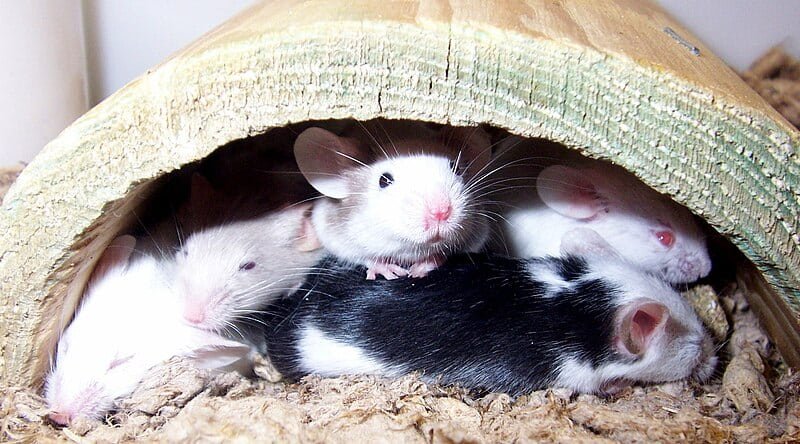Have you ever wondered about the social lives of mice? Do they wander alone or do they prefer the company of a friend?
Mice like being around other mice. They make friends, keep each other warm in winter, and play together. They talk to each other in squeaky sounds and through smells and touching. They’re shy around people, though.
Join us on a journey into the intricate world of mouse behaviour as we uncover the mysteries of their traveling habits.
Understanding Social Behavior Of Mice – Let’s Explore!
Mice are highly social animals, finding comfort and security in the company of others. Within their groups, they establish a hierarchy based on factors such as age and gender.
This ranking system helps prevent conflicts and maintain harmony within the mouse community. By understanding their place in the social structure, mice can interact with one another more peacefully.
Whether it’s snuggling for warmth, playing together, or communicating through various means like high-pitched sounds and scent markings, the bonds between mice are strong.
Bonding And Communication Of Each Other – Here To Know!

Mice engage in various behaviours to bond and communicate within their social groups. They enjoy cuddling and playing together, strengthening their relationships and social bonds.
Communication among mice involves emitting high-pitched sounds, which serve as a means of conveying information and expressing emotions within the group.
Despite their sociable nature with fellow mice, they often exhibit shyness around humans, preferring the comfort and familiarity of their group dynamics.
Finding Food & Looking Homes Together – Let’s See!
- Coordinated Foraging: During food hunts, mice coordinate their movements, ensuring they stay close to their companions. This collaborative effort allows them to cover more ground efficiently and locate food sources more quickly.
- Sticking to Small Territories: Despite their social nature, mice tend to stick to small territories, typically around 30 feet in diameter. This preference for localized areas facilitates easier coordination during foraging expeditions.
- Group Nesting Exploration: Similarly, when searching for suitable nesting sites, mice embark on group expeditions. They explore various locations such as basements and attics together, utilizing collective knowledge to find safe and comfortable spots for building nests.
- Finding Food Together: Mice, being social creatures, often collaborate when seeking sustenance. They prefer group outings, especially during nocturnal hours, to scavenge for food in nearby areas.
Growing Up And Moving Out – Here To Know!
Baby mice spend approximately 21 days under the care of their mothers before becoming independent. During this time, they rely on their mothers for warmth, protection, and nourishment.
Once they reach maturity, female mice typically remain close to their birthplace, establishing their territories nearby. In contrast, male mice may venture further away in search of new territories and potential mates.
This natural behaviour helps prevent inbreeding and promotes genetic diversity within the mouse population.
Ultimately, the transition from dependence to independence allows young mice to explore their surroundings and establish themselves within the broader ecosystem.
Read: How Fast Does An Arrow Travel – Unlocking The Speed!
Challenges Of Living Together – You Should Know!

Living together poses challenges for mice, as they thrive on social interaction. Separation from fellow mice can cause distress and unhappiness. However, not all interactions within mouse communities are harmonious.
Male mice often display aggression towards unfamiliar individuals, seeking to establish dominance within their group.
In contrast, female mice typically exhibit more cooperative behaviour, fostering smoother interactions among themselves.
These differences in social dynamics reflect the complex hierarchy and communication systems present within mouse colonies.
Despite occasional conflicts, the social bonds among mice ultimately contribute to their collective survival and well-being.
8 Signs You Have A Mouse In Your Home -Read It Now!
1. Missing Food:
If you notice dry food disappearing from your cupboards, such as grains, rice, seeds, and nuts, it could be a sign of mice in your home. They’re attracted to food sources and can sneak in through small cracks and holes, often found near pipes or in gaps between floorboards.
2. Small Droppings:
Mouse droppings are small, dark, and resemble grains of rice. Check behind furniture, in drawers, or in your loft for these droppings. The presence of droppings indicates a mouse infestation. They are typically found in secluded areas where mice frequent, such as along walls or near food sources.
3. Chewed Wires and Cables:
Mice like to gnaw on wires and cables, which can be dangerous and lead to fires. Inspect your electrical appliances for any signs of damage caused by mice. Check behind your TV, computer, and other electronics for gnaw marks, frayed wires, or chewed cables.
4. Strange Noises and Smells:

Rustling or scratching sounds at night, especially in the walls or ceiling, could mean mice are present. These noises are often more noticeable when your home is quiet, as mice are nocturnal creatures.
In addition to the sounds, you might also notice a musky or stale smell in certain areas of your home. This odour is typically caused by mouse urine and droppings.
If you experience these signs, it’s essential to take action to address the mouse infestation and prevent further damage or health risks.
5. Nesting Materials:
Check for shredded paper, fabric, or other materials that mice use to build nests. Look in dark, secluded areas like closets, attics, or under furniture, where mice often feel safe enough to establish their nests.
Pay close attention to hidden corners and behind large items, as these are prime spots for mice to hide their nesting materials.
6. Gnaw Marks:
Look for gnaw marks on furniture, walls, and baseboards, as mice constantly gnaw to keep their teeth trimmed. These marks may appear as small scratches or chewed areas, indicating the presence of mice in your home.
7. Visible Mice:
Spotting a mouse in your home is a clear indicator of an infestation. If you see one, there are likely more hiding nearby. Mice are social creatures that travel in groups, so the presence of one mouse suggests others are present as well.
8. Pet Behavior:
Pay attention to your pets’ behaviour. If they start sniffing around or showing interest in specific areas, they may have detected the presence of mice. Pets, especially cats and dogs, have keen senses and may react to the scent or sounds of mice before you notice any signs.
What You Can Do About It – A Simple Guide For You!

- Seal entry points: Close gaps and holes in walls, floors, and pipes to prevent mice from entering.
- Clean regularly: Keep your home clean and free of food crumbs to remove potential food sources.
- Set traps: Place mouse traps in strategic locations, such as along walls and near food sources.
- Contact a professional: If you suspect a mouse infestation, seek help from a pest control expert to assess the situation and implement effective solutions.
Read: Can You Travel With Kratom – Explore Boundless Possibilities!
Frequently Asked Questions:
1. How can I prevent mice from entering my home?
To prevent mice from entering your home, there are several proactive measures you can take. Start by sealing off any potential entry points, such as cracks or openings in your home’s exterior, using materials like caulk or steel wool. Ensure that doors and windows are properly fitted and have no gaps where mice could squeeze through.
2. What should I do if I find mouse droppings in my home?
If you find mouse droppings in your home, it’s important to take immediate action to address the issue. Start by wearing protective gloves and using a disinfectant to clean up the droppings and any surrounding areas thoroughly. Use disposable towels or a damp cloth to avoid spreading dust particles that may contain harmful bacteria.
3. Are mice dangerous to have in my home?
Yes, mice can pose various risks to your home and health, making them dangerous to have in your home. They can carry and transmit diseases such as Hantavirus, Salmonella, and Leptospirosis through their droppings, urine, and saliva, putting you and your family at risk of illness.
4. How do I know if I have a mouse infestation?
You can identify a mouse infestation by looking for various signs. One common indication is the presence of mouse droppings, which are small, dark, and resemble grains of rice.
5. What should I do if I suspect a mouse infestation in my home?
If you suspect a mouse infestation in your home, it’s crucial to take immediate action to address the issue. Start by conducting a thorough inspection of your home to look for signs of mice, such as droppings, gnaw marks, and nesting materials.
Conclusion:
Mice are highly social creatures that exhibit complex behaviours and interactions within their communities. From bonding and communication to foraging for food and building nests, mice rely on each other for survival and support.
Read:




